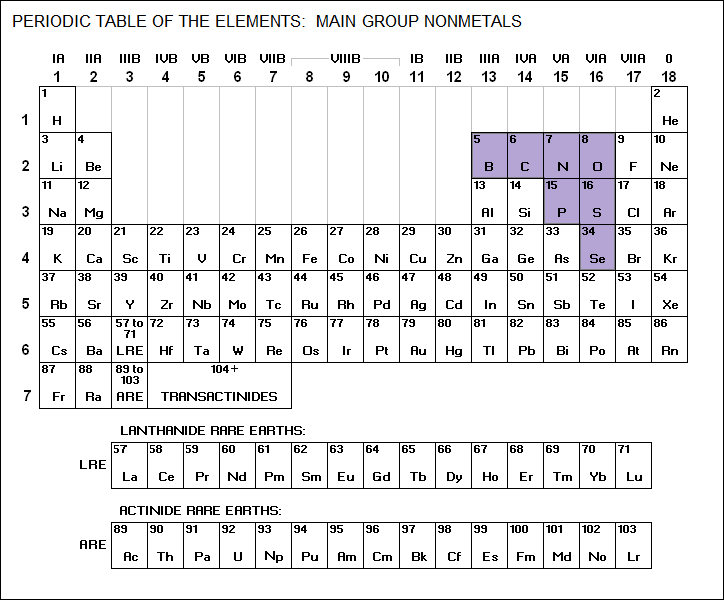
* Phosphorus is a member of the main group nonmetals family:

______________________________________________________________________
PHOSPHORUS / P / 15
Phosphorus comes in allotropic forms, the best known being "white
phosphorus" and "red phosphorus". White phosphorus is the form
generally used industrially: it burns spontaneously when exposed
to air and is a dangerous poison. Red phosphorus is produced by
heating white phosphorous in a sealed vessel for a number of days;
it is stable in air and not toxic. Its color actually varies from
orange to purple. There is also a "black phosphorus" that
resembles graphite. It can be created from white phosphorus under
pressure and amounts to little more than a chemical curiosity. All
phosphorus found in nature consists of the stable isotope P<31/15>.
atomic weight: 30.973761
abundance: 11th
density: 1.82 gm/cc (white phosphorus)
2.20 gm/cc (red phosphorus)
2.7 gm/cc (black phosphorus)
melting point: 44 C (white phosphorus)
boiling point: 280 C (white phosphorus)
valence: 3 <5>
____________________________________________________________________
The "P---" ion is known as "phosphide", while the "PO4---" ion is known as "phosphate".
The yearly production of phosphorus is well over a hundred million tonnes a year. Despite the fact that (white) phosphorus is highly toxic, phosphorus is essential for life in the form of the phosphate radical. It is a major component of fertilizers, along with nitrates; there are concerns that sources of phosphate are being depleted too rapidly, with increasing thought towards conservation measures.
White phosphorus is used in smoke grenades, though "willie peter", as the military calls it, has a bit of a nasty reputation, since any of it that falls on a victim keeps on burning as long as it is exposed to air. Phosphorus is also used to synthesize certain types of pesticides, as well as nerve gases.
